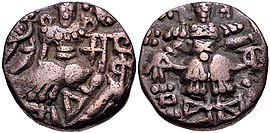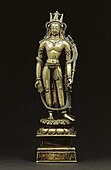Kalhana was the author of Rajatarangini, an account of the history of Kashmir. He wrote the work in Sanskrit between 1148 and 1149. All information regarding his life has to be deduced from his own writing, a major scholar of which is Mark Aurel Stein.

Lalitaditya alias Muktapida was a monarch belonging to the Karkota dynasty of Kashmir region in the Indian subcontinent. The Tang dynasty chronicles present him as a vassal-ally of the Tangs.
Shingara, better known as Sultan Sikandar Shah Miri, also by his sobriquet Sikandar Butshikan was the seventh Sultan of Kashmir and a member of Shah Mir dynasty who ruled from 1389 until his death in 1413.
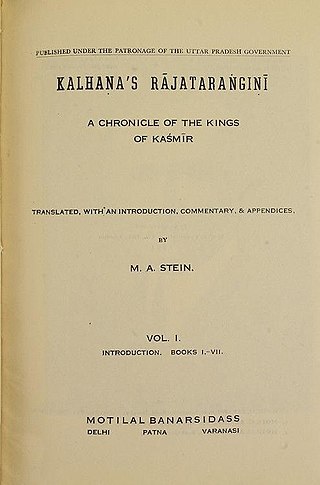
Rājataraṅgiṇī is a metrical legendary and historical chronicle of the north-western part of Indian sub-continent, particularly the kings of Kashmir. It was written in Sanskrit by Kashmiri historian Kalhana in the 12th century CE.

Didda, also known as The Catherine of Kashmir, was the last ruler of Utpala dynasty from 980 CE to 1003 CE. She first acted as regent for her son and various grandsons from 958 CE to 980 CE, and from 980 CE as sole ruler and monarch. Most knowledge relating to her is obtained from the Rajatarangini, a work written by Kalhana in the twelfth century.
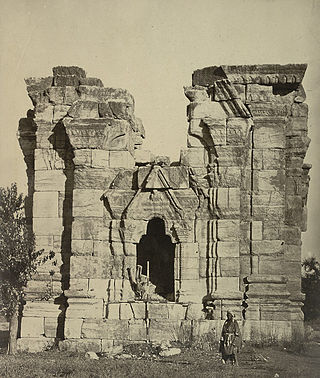
The Shankaragaurishvara Temple is a 9th century Hindu temple attributed to the Utpala dynasty. The temple is dedicated to the Hindu god, Shiva and located in Pattan, in the Baramulla district of Jammu and Kashmir, India. The temple was built by king Shankaravarman of the Utpala dynasty of Kashmir, who ruled between 883 and 902 AD.

Sugandha was the fifth ruler of Kashmir in the northern Indian subcontinent during the 10th century.
The Hindu Shahis or Uḍi Śāhis were a dynasty established between 843 CE and 1026 CE that had usurped power from the Turk Shahis. The Hindu Shahis core territory is described as having been formed in the regions of Eastern Afghanistan and Gandhara, encompassing the area up to the Sutlej river in modern day Punjab and expanding into the Kangra Valley. The empire was founded by Kallar in c. 843 CE after overthrowing Lagaturman, the last Turk Shahi king.
Aryaraja was a king of Kashmir who features in Rajatarangini, a legendary and historical chronicle of the north-western Indian subcontinent, particularly the kings of Kashmir. It was written in Sanskrit by Kashmiri historian Kalhana in the 12th century CE.
Pattan, is a sub-district town and a municipal community in Baramulla district within the Indian Union Territory of Jammu and Kashmir.

Parihaspora or Parihaspur or Paraspore or Paraspur was a small town 22 kilometres (14 mi) northwest of Srinagar in the Kashmir Valley. It was built on a plateau above the Jhelum River. It was built by Lalitaditya Muktapida and served as the capital of Kashmir during his reign.
Wangath Temple complex is a group of Hindu temple monuments in Wangath, close to Naranag, in the Ganderbal district of the Kashmir Valley of Jammu and Kashmir, India. Wangath is a village located around 48 miles (77 km) northeast of Srinagar. The current structure was built by Lalitaditya Muktapida of the Karkota dynasty in the 8th century CE.
The Karkota dynasty ruled over the Kashmir valley and some northern parts of the Indian subcontinent during 7th and 8th centuries. Their rule saw a period of political expansion, economic prosperity and emergence of Kashmir as a centre of culture and scholarship.

The Avantiswami Temple is an ancient ruined Hindu temple located on the banks of the Jhelum River, 28 km away from Srinagar in Awantipora, Jammu and Kashmir, India. Its ruins once consisted of two temples dedicated to Shiva and Vishnu, and were built under king Avantivarman of the Utpala dynasty in the 9th century CE. The site is maintained by the Archaeological Survey of India. Locals call the temple Pandav Lari, meaning "house of the Pandavas".

Avantivarman founded the Utpala dynasty. He ruled Kashmir from 855 to 883 CE and built the Avantiswami Temple in Awantipora, Pulwama.
The Second Gonanda dynasty, was a Kashmiri Hindu dynasty. According to Kalhana, this dynasty ruled Kashmir just before the Karkotas.

Sankaravarman was a ruler of the Utpala dynasty, which ruled over the Kashmir region from 8th to 10th century CE. The kingdom was established by Avantivarman, who ended the rule of Karkota dynasty in 855 CE.

Sri Pravarasena, also sometimes Pravarasena II based on the regnal lists of the Rajatarangini, was a 6th-century Huna king of the Alchon Huns in the area of Gandhara and Kashmir in northwestern India. His reign probably lasted about 60 years from about the year 530 CE.
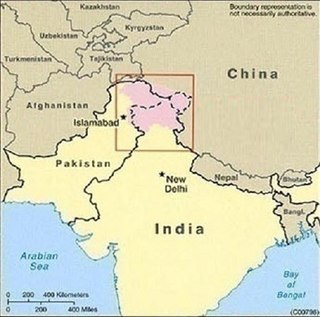
King Ashoka, of the Gonandiya dynasty, was a king of the region of Kashmir according to Kalhana, the 12th century CE historian who wrote the Rajatarangini.

Toramana of Kashmir, was a ruler of Kashmir in the 6-7th century CE. This ruler has often been called "Toramana II" in numismatic studies, but this name now tends to be used for an earlier Alchon Hun ruler of Kabulistan: Toramana II.
